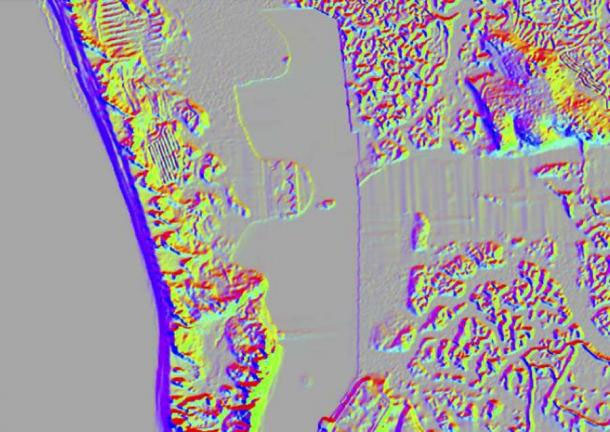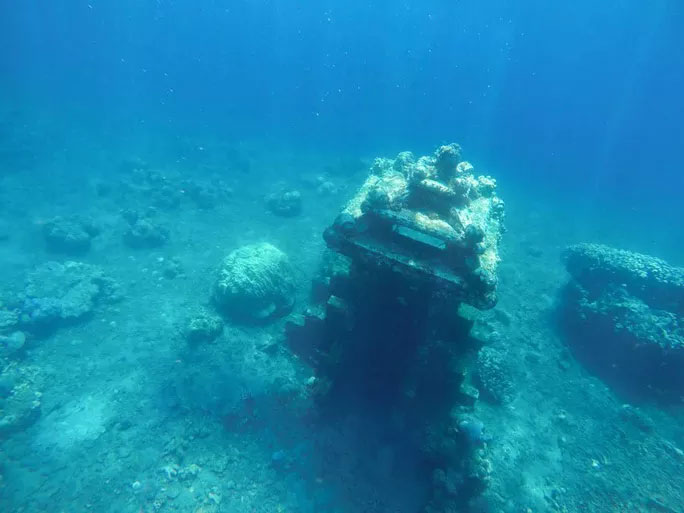The ancient pilgrimage center – the Temple of Hercules Gaditanus, mentioned in ancient Greek and Roman records, has unexpectedly emerged in laser scan images of the Cádiz Bay area in Spain.
According to Heritage Daily, the legendary temple was discovered when a research team from the University of Seville and the Andalusian Historical Heritage Institute (IAPH) utilized LiDAR, a laser remote sensing technology, to scan the Cádiz Bay.

LiDAR images reveal hidden structures – (Photo: IAPH).
They identified a large rectangular structure submerged underwater, which Dr. Francisco José García, Director of the Prehistory and Archaeology Department at the University of Seville, described to El Pais as a “dramatic discovery.”
This aligns with valuable historical documents steeped in legend from ancient Greek and Roman times.

Another underwater structure previously discovered – (Photo: IAPH).
According to Ancient Origins, the temple was initially used to worship the Phoenician god Melqart. The Phoenicians were renowned merchants and sailors of the ancient world, residing along the eastern Mediterranean coast and establishing magnificent city-states. Around 800 BC, they navigated to Andalusia in southern Spain and settled there, which explains the temple’s presence in the area.
The Romans conquered Andalusia from 210 to 206 BC, establishing the Roman province of Baetica. The aforementioned temple and the god Melqart were transformed into the classical god Hercules, and the temple became known as the Temple of Hercules Gaditanus, attracting even more pilgrims than before.
The ancient sanctuary area has now turned into a marshland, and over the past two centuries, several artifacts such as large bronze and marble statues of Roman emperors, along with smaller artifacts from the Phoenician era, have been excavated.
This structure measures 300 meters long and 150 meters wide, submerged 3 to 5 meters beneath the bay’s surface, matching descriptions of the famous temple.

















































